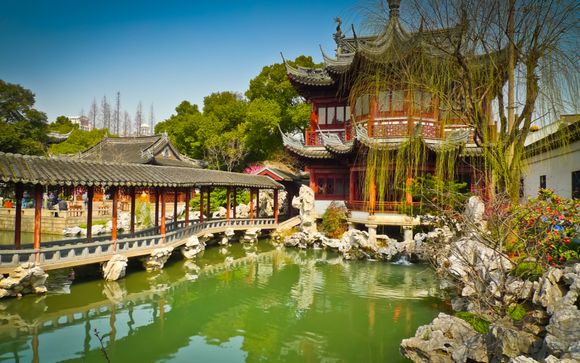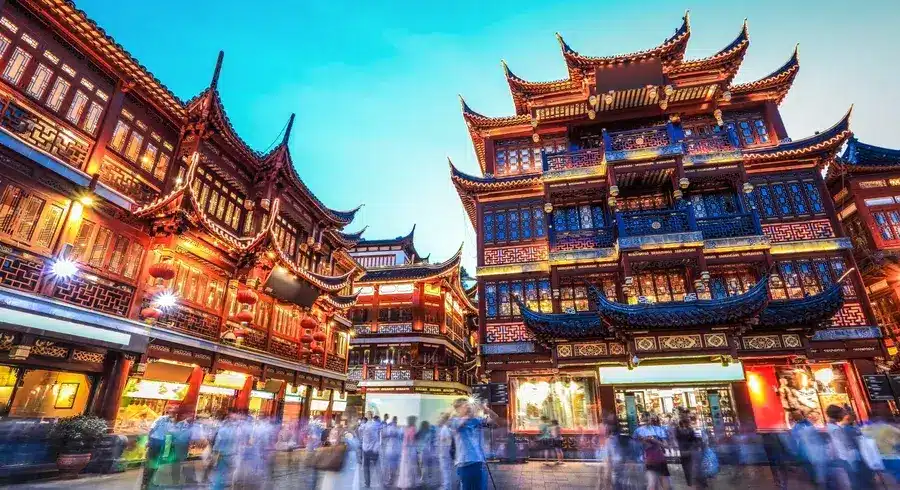The Best Regional Cuisines To Try In China Top 10 Suggestions
1. Be familiar with the Eight Culinary customsTip: Get familiar with the eight major Chinese food styles : Sichuan Cantonese Shandong Jiangsu Fujian Hunan Anhui Zhejiang. Each region has its own distinct flavor as well as dishes and cooking techniques.
It aids you in planning your meals by looking at your tastes.
Con: It's difficult to remember every detail of the cuisines.
2. Take advantage of local specialties
You should try some of the famous regional dishes like Peking Ducks from Beijing or Shanghai as well as Hot Pots at Chengdu.
Pro: With a rich and diverse cultural background authentic dining experience is assured.
Con: Can hinder your ability to discover different cuisines within the region you're in.
3. Pay attention to regional flavours
Tips: Sichuan cuisine is spicy and numbing. Cantonese food is light and fresh, and Jiangsu dishes are sweet and delicate. Pick your dishes based on your spice tolerance.
Pro: You will be able to order dishes that are appropriate for your taste and avoid having them sent back.
Cons: Some flavors may require some experimentation and a cultivated taste.
4. Explore Street Food
Take note of the unique street food options available in every city. For example, you may find Jianbing (savory burgers in Xi'an) or Roujiamo(Chinese crepes)in Beijing. Take a bite of local food.
Pros: Street food is inexpensive, easy to prepare and provide an insight into the local scene.
Con: Hygiene is sometimes an issue. Choose vendors who have an extremely high turnover.
5. Learn Basic Dining Etiquette
Knowing Chinese eating habits is crucial. For example, having meals with family members, and not sticking chopsticks in the rice are all part of this.
Pro: Represents respect for local traditions and enhances the dining experience.
Con: It can take a while to get used to new etiquette.
6. Get suggestions from locals
Locals will usually know which establishments or cuisines are the best in their region. Request advice.
Pro: Make sure you find hidden gems and avoid tourist traps.
Con: Communication may be difficult because of the language barrier.
7. Be Open to Unfamiliar Ingredients
If you're in search of a new recipe, try playing around with different ingredients. Explore new food items with curiosity.
Pro: You will learn to appreciate Chinese food and expand your palette.
Con: Some dishes might not align with your tastes or dietary restrictions.
8. Be in a position to be able to accommodate any the dietary restrictions of your clients.
Learn Mandarin phrases that are used to express preferences and allergies.
Pro: Provides a safe dining experience tailored to your requirements.
Con: There may be limited choices for those who have dietary restrictions specific to their needs.
9. Serve regional beverages with your food.
Drink local beverages like tea in Fujian and baijiu in north China.
Pro: Enhances the dining experience and improves dining experience overall.
Con Contra: Strong flavors like baijiu may not appeal to everyone.
10. Avoid Overordering
Tip: Chinese dishes are typically served in a family setting, so choose in a moderate amount and add additional ingredients if needed.
Pro: Reduces food waste and ensures that you have the opportunity to sample a variety of dishes.
Cons The temptation is to spend too much money on food due to the wide variety.
The Benefits of Exploring Regional Cuisines In China
Explore a wide range of flavors and techniques.
Cultural Insight : Develop a better understanding of regional identites and customs.
Accessibility - Many of the local dishes are reasonably priced.
Memorable Experiences - Trying the iconic dishes of their country of origin will leave you with unforgettable memories.
The cons of Exploring Chinese Regional Cuisine
Hygiene concerns The food industry and smaller restaurants might not be up to the standards of hygiene set by international standards.
Language barriers. Menus or explanations in Mandarin can hinder the ability to place orders.
Certain flavors or textures are difficult for certain people.
Restrictions on diet: Those with severe food allergies or who are strict vegetarians can struggle to eat in certain areas.
If you stick to these suggestions and are a little adventurous then you'll be able to explore the variety of delicious regional Chinese cuisines while navigating the challenges. Follow the recommended discover the charm of this site for more advice including kashgar tour maps, tips for identifying copyright, the top 4 movies about kung fu and chinese culture, chaotianmen dock%EF%BC%8C a major water transportation hub in chongqing, shenzhen golf club, taishan tour maps, ganden temple, great tang all day mall xian.html, eating in fuzhou, shopping in dunhuang and more.

Top 10 Tips To Visit Famous Temples During Seasonal Visits In China
1. Visit during off-season. (Autumn/Winter).Tip. The weather will be cooler and there will be less visitors.
Pro: Less crowded, offering an unhurried and peaceful experience.
Cons: The weather may be colder, which could make temple visits outdoors uncomfortable.
2. Prepare for Extreme Weather Conditions
The temperatures can be quite different during different seasons. The temperatures can vary greatly across seasons. Check the weather and pack accordingly.
The benefit is that you'll be able to prepare for any type of weather, guaranteeing the comfort of your trip.
Cons: It can be difficult to pack to deal with extreme weather, especially when you're traveling with a light load.
3. Visits to Vibrant Flora in the spring and Summer
TIP: Visit temples at the beginning of spring as well as in the summer. It is during this time that you will see beautiful gardens, lush flowers, and landscapes all around.
Beautiful scenery can enhance the experience of visiting temple grounds.
Con The summer months in the US can be extremely hot and packed. This is particularly true on the national holidays.
4. Think about Special Events and Festivals
Make sure to plan your trip around events such as the Mid-Autumn Festival or Chinese New Year. This is the best time to visit a temple as it offers specific rituals and ceremonies.
Pro: The temples typically have lively traditional celebrations and provide an unique, exciting experience.
Con: Temples can be extremely crowded during the festival seasons, and the costs of accommodation may increase.
5. Avoid Peak Holiday Seasons
TIP: Avoid visiting temples during tourist peak seasons, such as Chinese New Year and Golden Week (October), which are often crowded by foreign and local visitors.
Pros: Peaceful and tranquil visits without the crowds. Offers an experience of spirituality.
Con: You may miss some of the festival special events if in the area during peak times.
6. Look for Temple Closures in Winter.
It is important to find out which temples you are planning on visiting are open or closed in winter. This is especially important for those located in remoter regions or areas. Be sure to check the hours ahead of time.
It stops you from taking unnecessary trips, and lets you plan other activities.
Con: Many temples are shut or have hours reduced due to repairs. This could lead to disappointment.
7. Early Morning Visits in the summertime
If you're visiting in the summer months, make sure to arrive early in order to avoid the heat of midday. Most temples are open in the early morning as there are fewer visitors and less heat.
A quieter and cooler experience, without the crowds.
Cons Pros: Early wake-up times could not be ideal for everyone.
8. Be Prepared to Rain in Summer
Tip: Summer can also be a time of heavy rain, particularly in southern China. Pack an umbrella or rain gear if you are traveling during this time.
You can still appreciate the magnificence of the temple even in the event of rain.
Cons: Rain could cause outdoor activities to be disrupted, and the temple grounds can be slippery.
9. Visit temples in the Mountainous Areas in Autumn
Tip: The autumnal foliage provides a stunning backdrop for temples in mountains (e.g. Mount Wutai and Mount Emei), as it is a time when the weather is pleasant.
Pros: The cool temperatures allow greater comfort when hiking or exploring the outdoors and also allow for breathtaking views.
Con: Mountain temples that are popular have a tendency to draw crowds especially on weekends or holidays.
10. Take into consideration the Lunar Calendar when planning specific occasions
Tips: Many Chinese temples use the lunar calendar, and a lot of events or rituals are linked to lunar calendar dates. It is essential to keep track of the calendar so that you can be able to attend important occasions, like the Lantern Festival, Buddha’s Birthday or other temple ceremonies.
Pros Unique cultural experiences and deeper understanding of the local practices of spirituality.
Cons: Researching and planning your trip around the lunar schedule could take longer, and you may find that events do not align with your travel dates.
The Benefits of Visiting Chinese Temples in Season
Fewer crowds during off-season excursions are more peaceful and reflective.
Cultural Festivals: These events provide greater understanding of local religions and cultures.
Beautiful scenic beauty: Visits either in the spring or autumn months provide stunning landscapes with vibrant gardens that surround temples.
Cooler Weather: Autumn and winter are the best times to go temple exploration.
The cons of seasonal Chinese Temple Visits
Uncertain Weather: Winter could be cold, while summer could be too hot, which can affect your ease of living.
Temple Closures: Some temples will close during extreme weather, or when they have limited hours.
Crowded during Festivals: Popular festivals and holidays can attract huge crowds, making it difficult to fully enjoy the temple's tranquil atmosphere.
The following are the limited activities: Certain seasonal events or ceremonies might not be held if you visit outside the appropriate timeframe.
If you plan your trip according to the season it can result in an enjoyable and memorable trip. Knowing the seasons of the temples will enable you to maximize your visit, whether you want peaceful solitude or cultural festivals. Follow the most popular discover what to see and do at this site for website recommendations including shanghai portman acrobatic show one of the best acrobatic shows in shanghai, chinese festival cuisine, chinese furniture the development history of chinese furniture, shopping in dunhuang, the song of everlasting sorrow the famous long narrative poem, great tang all day mall xian.html, chaka salt lake, shopping in shangri la, xishuangbanna, shopping in suzhou and more.

Comments on “20 Great Tips To Explore Diverse Chinese Dishes”